Franky Strachan – 29 July, 2013
What is most overwhelming and consistent throughout this exhibition is the mutual respect which underlines the artist-scientist relationships. The artists do not seem interested in criticising their scientific counterparts but rather have expressed their admiration and respect for them. This could not be predicted. When disparate disciplines collide, tensions can easily transpire and very quickly conflicting ideologies can create an atmosphere of defensiveness.
Dunedin
Group show of artist and scientist collaborations
Art and Neuroscience
22 July 2013 - 9 August 2013
Art and Neuroscience is an exhibition which saw 17 artists and 15 neurological researchers working together, either individually or in small groups, to develop visual responses to neurological research topics ranging from Alzheimer’s and Parkinson’s through to the effects of Ritalin. Situated within The Hunter Centre, Otago University’s major health science facility, the works are not immediately obvious. Tucked away, framed like specimens, or so strikingly fitting for their environment that they have architectural appeal, they emerge to the viewer one by one. The large space is open, well-lit and is trimmed with a mezzanine which is flanked by glass-walled classrooms and group study areas through which distracted students exchange glances and gaze pensively.
It was neuroscientist and senior lecturer Dr Ruth Napper who, whilst herself attending an evening art class, had the spark of inspiration for the exhibition. Interested to know how art students would interpret her own work and that of her colleagues, she took the idea of an art collaboration to Peter Stupples, Senior Lecturer in Art History and Theory at the Dunedin School of Art at the Otago Polytechnic. Together they coordinated the project with the ultimate hope that it would draw in audiences who wouldn’t normally be thinking about neuroscientific research. In coordinating the project, the only stipulation for the artists was that the art must express something of the given research, but should not be illustrative of it.
This had varied results, with some artists being more figurative than others. Overall it prompted serious artistic thought with the neuroscientists being particularly delighted and intrigued by the aestheticisation of their research. Comprising installations, detailed embroidery, paintings, sculptures, films and videos, prints, photographs, jewellery and ceramics the exhibition is diverse and each piece both peculiar and thoughtful.
Briefly, here are five examples that give an impression of the range of collaborations: neuroscientist Brian Hyland and artist David Green produced an eerie ‘three-in-one’ video which overlapped footage and dialogue to translate the Jungian theory of Free Association; artist Rowan Holt worked through Joanna Williams’s Alzheimer’s research to produce a large hanging sculpture whose segmented wooden framing is emblematic of the relationship changes which occur as a result of degenerative memory loss; neuroscientist Damian Scarf and artist Sue Taylor present a felt scarf honouring the cognitive ability of homing pigeons by delicately sewing, in lieu of drawing, images pertaining to pigeons’ brain structures and distinctive navigational capabilities; Joe Papps in conjunction with neuroscientist Laura Boddington created a box through which the viewer peers in order to experience a powerful looped film involving scratched 16mm footage which has been spliced with digital film; Amy Moffitt worked with neuroscientist Louise Parr-Brownlie to convey the facial symptoms of Parkinson’s on layered and symbolically torn A4 paper.
Artist Jimmy Bellaney in response to the work of neuroscientist Phil Brownjohn, produced a large abstract painting in primary hues to express the function and dysfunction of the brain post-stroke. The veining, pooling and cracking of the paint as assorted viscosities met and marbled made for an image reminiscent of a brain scan or anatomical thermal imaging. However if the painting were removed from the context of this exhibition it could easily be taken as some kind of geological reading. These analytical interpretations suggest something about the way we read imagery. Such configurations and patterns, signposts and symbols, connections and fragmentations, as well as the presentation of new ideas and unexplored territory, are notions we are taught to seek in both artistic and scientific material. When presented with chemical symbols or mathematical notations, symbolic iconography or emblematical colour-choices, we learn to perceive visual data as encoded. Not only does this call to mind our scholarly expectations in approaching the artistic and scientific material respectively, but it highlights the fact that the Art and Neuroscience exhibition embodies the codification of two disciplines simultaneously.
Artists Desi Liversage and Katya Gunn skilfully illustrate this equivocality in paying homage to lab rats by creating an exquisite reliquary from the (ethically approved) skeleton of a rat. This piece is tied to neuroscientist Justine Fuller’s research on the processes which occur in the brain of an ADHD sufferer who is taking Ritalin, but it also relates to the time-honoured art-historical tradition of the momento mori whereby artists provide symbolic reminders of the inevitability of death within their paintings. Like a few other art works, this small but touching sculpture sits on a pedestal like a displaced museum article or a prized curiosity from a Victorian cabinet.
Also in keeping with this aesthetic, Richard Mountain has sculpted an enlarged virus based on the work of neuroscientist Valerie Tan (it could easily feature in a Verne-inspired film). Tan is researching the potential of a virus injection to prevent the onset of Alzheimer’s disease and Mountain’s three-dimensional interpretation gives weight to the silently violent microscopic world. This can be directly contrasted with artist Becky Cameron’s contribution, which likewise pertains to Alzheimer’s disease. In the form of the light play created by a softly revolving lantern, Cameron gently connotes temporality and mapping of our memories. I find her piece to be the most poignant of the entire exhibition - there is something unassuming, poetic and penetrating about its ephemeral effect, and while some works in the show are literal interpretations, Locus Lucidus asks the viewer to turn inwards.
What is most overwhelming and consistent throughout this exhibition is the mutual respect which underlines the artist-scientist relationships. The artists do not seem interested in criticising their scientific counterparts but rather have expressed their admiration and respect for them. This could not be predicted. When disparate disciplines collide, tensions can easily transpire and very quickly conflicting ideologies can create an atmosphere of defensiveness. Yet Art and Neuroscience does not seem strained, with the result that this project draws in a wider audience to consider the complexities of neurology. A very successful exhibition indeed.
Franky Strachan
Recent Comments
Peter Stupples
This Project is only one part of the Dunedin School of Art and University of Otago interchange. Visit the Richardson ...
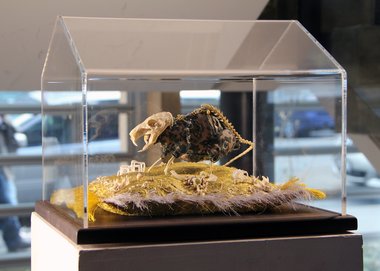

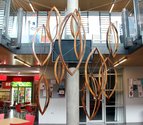
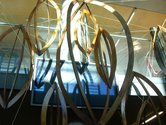
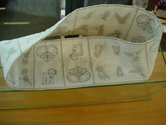
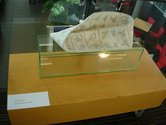


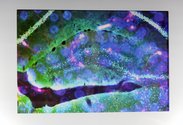
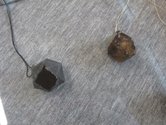

 Two Rooms presents a program of residencies and projects
Two Rooms presents a program of residencies and projects Advertising in this column
Advertising in this column
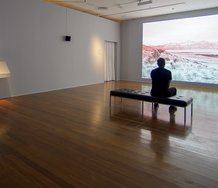
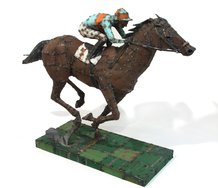
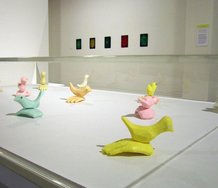
This Discussion has 1 comment.
Comment
Peter Stupples, 5:18 p.m. 4 August, 2013 #
This Project is only one part of the Dunedin School of Art and University of Otago interchange. Visit the Richardson Building in the University to see the exhibition 'Rubbish' with work by Kristin Peren and Marion Wassenaar, with great catalogue. This exhibition is part of the on-going series of shows in the Faculty of Law: this one is Art in Law X, 7-10th floors of the Richardson Building. Recommended to all visitors and residents of Dunedin.
Participate
Register to Participate.
Sign in
Sign in to an existing account.